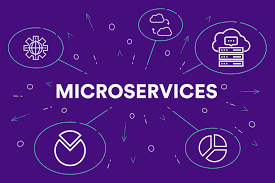Source: searchapparchitecture.techtarget.com
In a microservices architecture, numerous small, independent services integrate as needed to form an application. As such, development teams must monitor every microservice, and the path through them, to ensure the application does what it is designed to do. This is where microservices testing tools enter the picture.
To figure out how to test microservices effectively, get a handle on the six major microservices tests that software teams should perform, and the popular tools they use to perform those tests.
The six essential microservices tests
There are six main types of microservices tests that software teams should focus on to ensure that they can avoid problems with functionality and communication:
- Unit test. Looks at the smallest piece of testable software code to ensure it behaves correctly.
- Integration test. Verifies communication and interactions between components are accurate.
- Component test. Tests microservices in isolation, with the use of mock doubles as needed, to verify they meet requirements.
- Contract test. Vets the interactions at the boundary of an external service to ensure it meets the contract that is expected by the consuming service.
- End-to-end test. Ensures all the components work together and they meet external requirements and achieve the intended functionality.
- Performance test. Ensures that services and applications maintain high availability, viable resource consumption and distribute workloads appropriately.
Popular microservices testing tools
There are many tools available to track, monitor and remediate microservices operation and design as needed. Here are some microservices testing tools commonly used in the development industry.
Gatling. Gatling is a load testing tool written in Scala, which enables it to run simulations on multiple platforms. At the end of a simulation, Gatling automatically reports on metrics such as active user numbers and response times. It’s typically used to test the performance of microservices and web applications.
Hoverfly. Hoverfly is an open source, automated API communication simulation tool that helps with integration testing. The user can test how APIs respond to specific events, such as latency in the network, and rate limits. It also performs test calls between microservices by simulating communications, and then captures requests and responses in proxy mode to verify they work as expected.
Jaeger. Jaeger is an open source, end-to-end distributed tracing tool that monitors and troubleshoots microservices-based systems. By tracking services across the software’s operations environment, it can perform root-cause analysis, monitor key service dependencies and identify areas to optimize performance.
Pact. Pact is a contract testing tool that examines HTTP and message interactions to ensure applications are working in a consumer-driven contract manner. Essentially, the consuming services dictate how the providing services should provide them the data they need. The providing service then continuously tests to ensure they stay in line with these contracts, thus providing an individualized testing method that should ideally cut down on large unit tests.
There are numerous other microservices management and testing tools that help software teams deal with the unique aspects of distributed architecture. One of these tools is HashiCorp’s Vagrant, a virtualization tool that enables IT teams to create disposable software development environments, test infrastructure management scripts and track deployments. VCR is a unit testing tool that captures HTTP calls; it then saves these calls and replays them during future tests to speed up the process. Another example is WireMock, an HTTP mock server you can use to record and replay API interactions, create fault injections, track communication delays and simulate stateful behavior.


